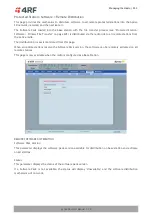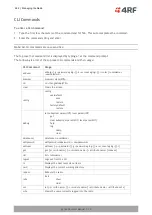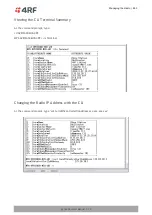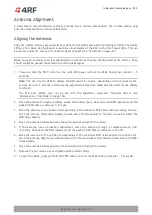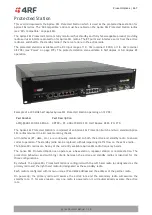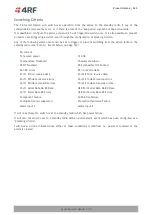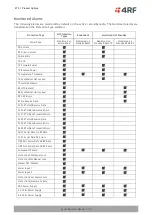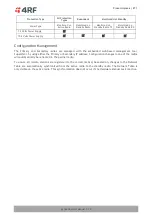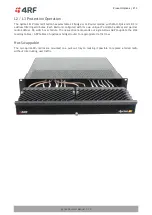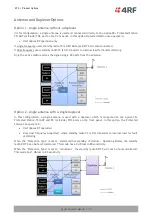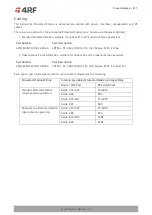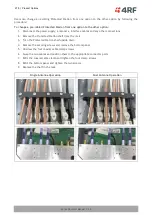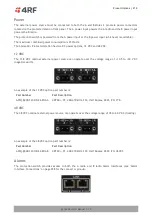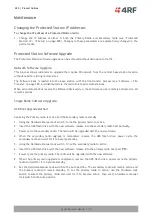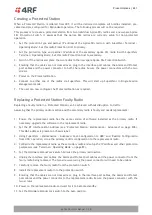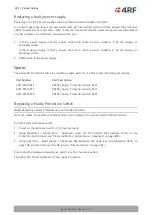
Product Options | 267
Aprisa SRx User Manual 1.3.0
Protected Station
This section documents the Aprisa SR+ Protected Station which is used as the protected base station for
Aprisa SRx radios. The ‘SR Compatible’ option must be enabled on the Aprisa SR+ Protected Station radios
(see ‘SR+ Compatible’ on page 220).
The Aprisa SR+ Protected Station is fully monitored hot-standby and fully hot-swappable product providing
radio and user interface protection for Aprisa SR+ radios. The RF ports and interface ports from the active
radio are switched to the standby radio if there is a failure in the active radio.
The protected station is available with a DC input range of 10 - 30v (nominal 12 VDC) or 18 - 60v (nominal
48 VDC) (see ‘Power’ on page 279). The protected station also available in half duplex or full duplex RF
operation.
Example of a 400 MHz half duplex Aprisa SR+ Protected Station operating on 12 VDC:
Part Number
Part Description
APSQ-R400-SSC-HD-22-ENAA
4RF SR+, PS, 400-470 MHz, SSC, Half Duplex, 2E2S, EN, STD
The Aprisa SR+ Protected Station is comprised of an Aprisa SR+ Protection Switch and two standard Aprisa
SR+ radios mounted in a 2U rack mounting chassis.
All interfaces (RF, data, etc.) are continually monitored on both the active and standby radio to ensure
correct operation. The standby radio can be replaced without impacting traffic flow on the active radio.
The Aprisa SR+ radios can be any of the currently available Aprisa SR+ radio frequency bands.
The Aprisa SR+ Protected Station can operate as a base station, repeater station or remote station. The
protection behaviour and switching criteria between the active and standby radios is identical for the
three configurations.
By default, the Aprisa SR+ Protected Station is configured with the left hand radio (A) designated as the
primary radio and the right hand radio (B) designated as the secondary radio.
Each radio is configured with its own unique IP and MAC address and the address of the partner radio.
On power-up, the primary radio will assume the active role and the secondary radio will assume the
standby role. If, for some reason, only one radio is powered on it will automatically assume the active
role.

